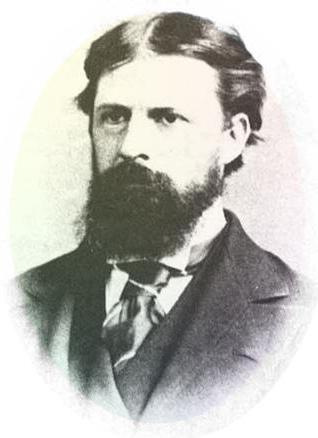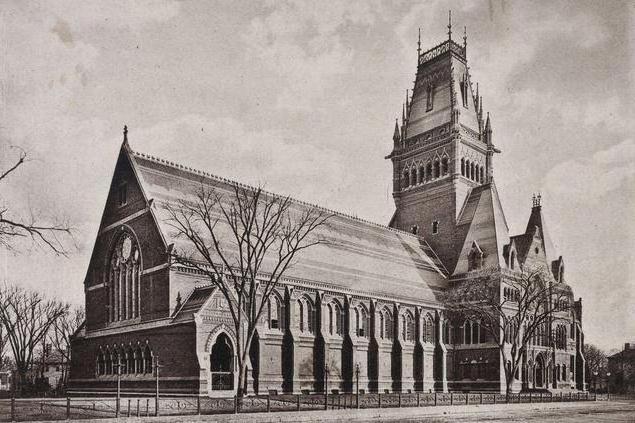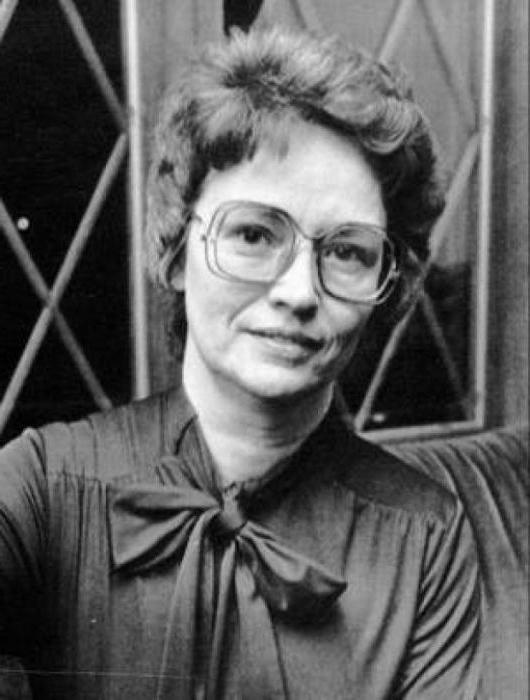Pierce Charles Sanders - American philosopher,a logician, a mathematician and a scientist, whom some call the father of pragmatism. He was educated chemist and worked as a scientist for 30 years. He is appreciated for his enormous contribution to logic, mathematics, philosophy and semiotics. Also, the American scientist is popular with the fact that he put forward the main provisions of the philosophical trend - pragmatism.

Confession
Charles Pierce is an innovator in mathematics,statistics, philosophy, and also in some methodologies of research of various sciences. Pierce considered himself primarily a logician. He made a great contribution to this science. Along with this, logic opened the way for new discoveries and conclusions. He saw logic as a formal branch of semiotics, the founder of which became. In addition, Charles Pearce defined the concepts of abductive reasoning, as well as strictly formulated mathematical induction and deductive reasoning. Already in 1886 he saw that logical operations can be performed by electrical switching circuits. The same idea was used decades later for the production of digital computers.

What is pragmatism?
Pragmatism is a philosophical trend thatoriginated in the United States of America in 1870. Pragmatism views thoughts as a tool for predicting and solving problems and actions, and also rejects the idea that the human function of thought is connected with metaphysics and similar abstract things, like parallel reality and the influence of higher intelligence on fate. Pragmatists argue that the truth is only that which gives practical, useful results. The pragmatism of Charles Pierce describes the "changing universe", while the idealists, realists and Thomists (followers of Catholic thought) hold the opinion of the "unchanging universe". Pragmatism is a philosophy that contradicts all attempts to explain metaphysics and redefines some truth of a certain direction into a temporary consensus between people in the field under investigation.
What is semiotics?
Semiotics is the study of meaning formationsignaling processes. This includes the study of the signs of semiotic processes, their designation, designation, similarity, analogy, allegory, metaphor and symbolism. This science explores the study of signs and symbols as part of communications. Unlike linguistics, semiotics also studies non-linguistic systems of signs.
Semiotics of Professor Charles S. Pierce
The semiotics of Charles Pierce highlights a number of keyconcepts (concepts of signs, their meanings and sign relationship). He was well aware that this area of research should be a single science - semiotics. Therefore, Pierce defined the basic concepts of semiotics, here is its classification:
- Signs-icons:Pictorial signs in which a significant and signifying object have a single semantic validity. For example, you can give a warning sign "cautiously: children", which shows running children. This road sign encourages a decrease in speed on the road and is installed near general education schools, kindergartens, youth sports sections (or creative), etc.
- Signs-indices:signified and signifying objects (or actions) are related to each other as far as distance in time or space. For example, you can point to the road signs that give the traveler information about the name, direction and distance to the next village. Also, the pictorial signs that illustrate, say, frown eyebrows - are considered a sign-index, because here the emotional background of a person (in this case - anger) is transmitted.
- Symbols-symbols:the signified and the signify are of a single character under the prism of a certain convection (we are talking about preliminary convention). Here, for example, a road sign that illustrates an "inverted" triangle. The transmitted meaning of the sign is "give way", but its designation is not related to the stimulating action, because it's just an inverted triangle. Under this same prism, national symbols come into being, where the depicted object is rhetorical for all. Symbols can be all words from existing languages, however, the word-imitation (such as "croak," "meow", "grunt", "trample" and the like) falls into the list of exceptions.

Charles Pierce: Biography
Born September 10 in 1839 in the year Cambridge (stateMassachusetts) in the family of the famous American mathematician and astronomer Benjamin Pearce. Charles led an early privileged life: parents refused to discipline and educate their children because of fear to suppress their individuality. In addition, the academic and intellectual atmosphere of the family home, which was often visited by highly spiritual and important dignitaries, did not allow Pierce to choose a different path from the scientific one. Among the guests there were often outstanding mathematicians and scientists, poets, lawyers and politicians. In this environment, young Charles Pierce managed to maintain comfort and interest.

Пирс был вторым из пяти ребенком в семье.He had four talented brothers who also partially linked their lives with science and high ranks. James Mills Pierce (elder brother) followed his father to Harvard University, where he began in-depth study of mathematics.
Another brother, Herbert Henry Pierce, madeoutstanding career in the intelligence services of foreign affairs. The younger brother, Benjamin Mills Pierce, studied engineering and was successful in this area, but he died young. The talent of the brothers, especially Charles, is largely associated with the colossal intelligence and influence of their father, as well as with the general vital intellectual atmosphere that constantly surrounded them.
Charles Pierce: Books, Scientific Works
Pierce's popularity and reputation is largelybased on his number of scientific papers published in American scientific journals. His works were reviewed in the "American Academy of Arts and Sciences", in the "National Academy of Sciences" in the journal of speculative philosophy Popular Science. The scholarly works of Charles Pierce Sanders on mathematics and philosophy are divided into two stages: those published during life and after death.

Pierce's Books in Life
- The book "Photometric Studies" 1878. 181-page monograph on the application of spectrographic methods of astronomy.
- The book "Studies in Logic at the John Hopkins Institute" 1883. Collection of research papers of graduate students and doctors, including Charles Pierce himself, in the field of logic.
Major posthumous publications
Harvard University received from Pierce's wifemany documents after his death (1914). About 1,650 unpublished manuscripts in a total of 100 thousand pages were found in his office. The first published anthology of Pierce's articles was a one-volume book entitled Chance, Love, and Logic: A Philosophical Essay. The work was edited by Morris Raphael Cohen in 1923. Later, other anthologies began to be published, the publications of which were in 1940, 1957, 1958, 1972, 1994, and 2009.

Most of the manuscripts of Pierce have already been published, but there are some copies that the world does not know because of the unsatisfactory state of the documents.
- 1931-58:"Collection of articles by Charles Pierce Sanders" in 8 volumes. Here are collected all his works from 1860 to 1913. However, the most extensive and fruitful work begins in 1893. Initially, the articles were not structured and varied in size, so for a more correct view, an editor's hand was required. The first to the sixth volumes were edited by Charles Hartshorne, and the seventh and eighth volumes by Arthur Burke.
- 1975-87: "Charles Sanders Pierce:contribution to the nation "- 4 volumes. This collection includes more than 300 reviews and articles by Pierce, which were partially published during his lifetime from 1869 to 1908. The collection of scientific papers was edited by Kenneth Lane Keener and James Edward Cook.
- 1976 - to present:"The New Elements of the Mathematics of Charles S. Pierce" - 5 volumes. Here are published the most productive work of Pierce in the field of mathematics. Editorial by Carolyn Eisel. The status of the project is not today "in development".
- 1977 - to the present: "Correspondence between Charles S. Pierce and Victoria Welby from 1903 to 1912."
- 1982 – по настоящее время: «Писания Чарльза С.Pierce - Chronological Edition. The first publication of the project was in 2010, but the work continues to this day. The first published 6 volumes cover the life of a scientist from 1859 to 1889.
- 1985 - to the present: “The History of Perspectives of Piers Science: the History of Science” - 2 volumes. Edited by Carolyn Eisel.
- 1992 - to the present: “The Reasoning on the Logic of Things” - lecture by Professor Pierce for the 1898th year. Editorial: Kenneth Leine Kinnear with comments by Hilary Putnam.
- 1992-98: Essential Peirce - 2 volumes. Important examples of the philosophical works of Charles Pierce. Edited by Nathan Hauser (1st volume) and Christian Clausel (2nd volume).
- 1997 - to the present:"Pragmatism as a principle and method of correct thinking." A collection of Pierce's lectures on pragmatism at Harvard University in the form of a short educational publication. Editorial: Patricia Ann Turisy.
- 2010 - present: “The philosophy of mathematics: Selected works”. Exclusive, previously not published anywhere, the work of Pierce in the field of mathematics. Editorial: Matthew Moore.
The contribution of the great scientist to science

Charles S.Pierce made a number of astounding discoveries in formal logic, fundamental mathematics. Also, the American scientist is the founder of pragmatism and semiotics. Most of his scientific papers received high marks only after his death. The scientist died on April 19 in 1914.












